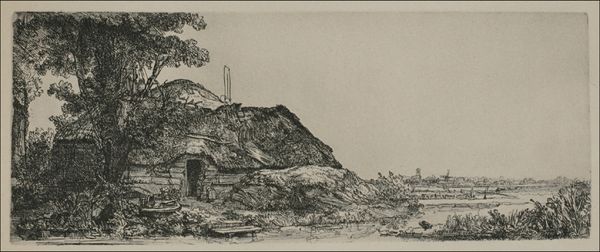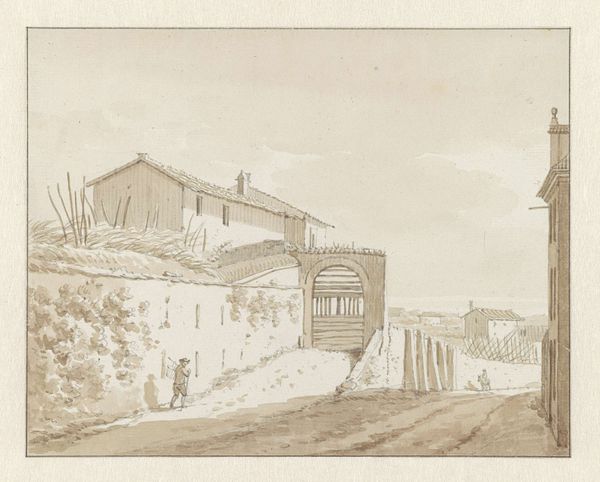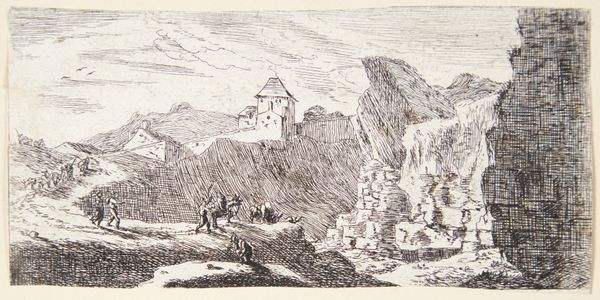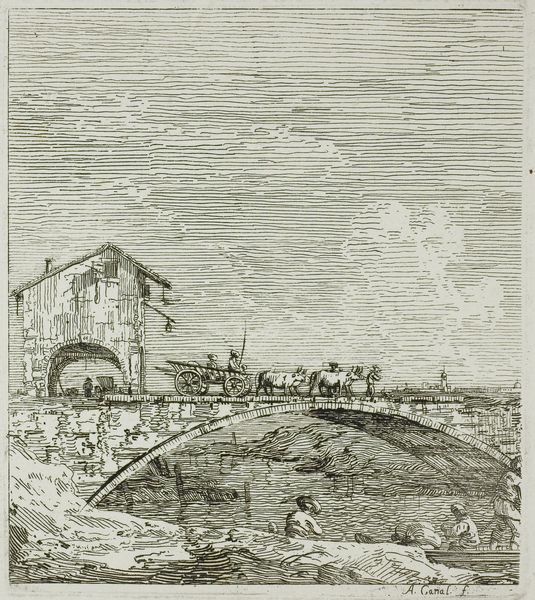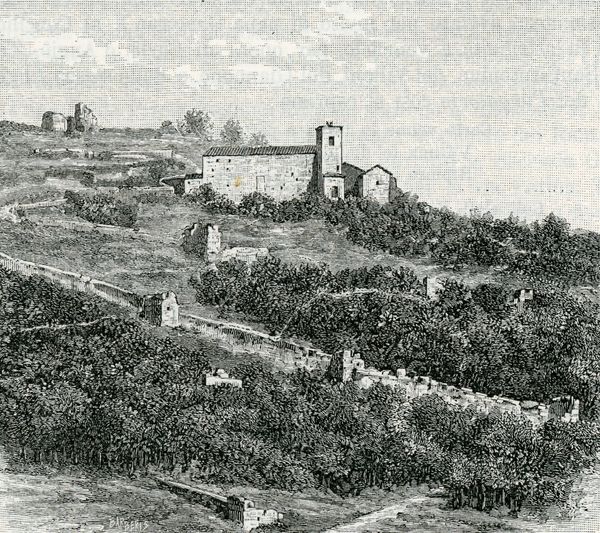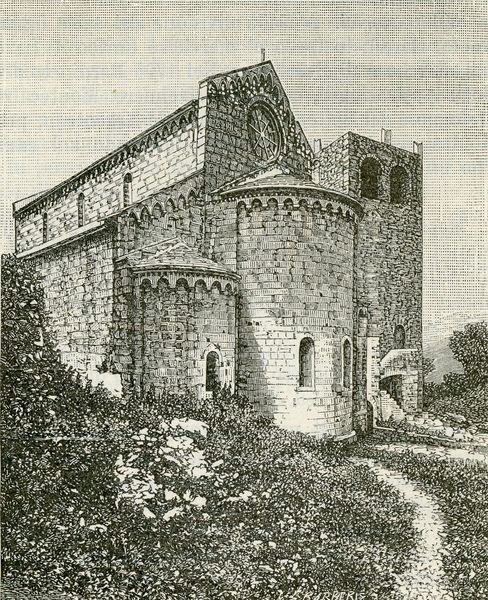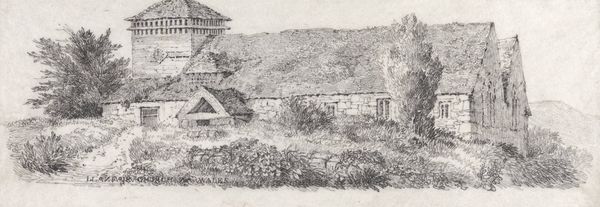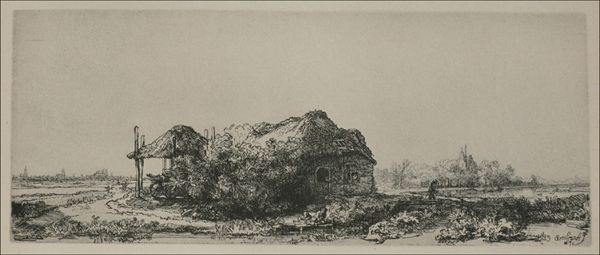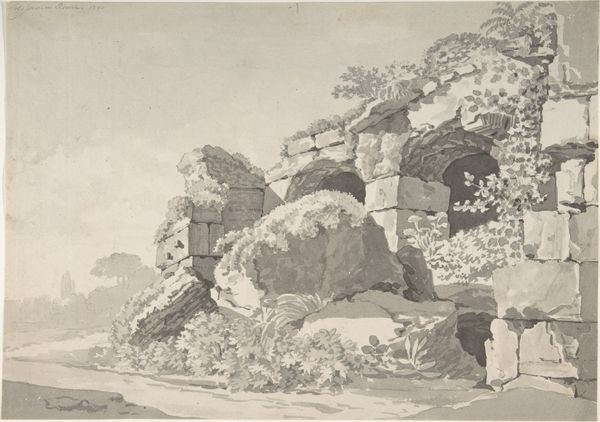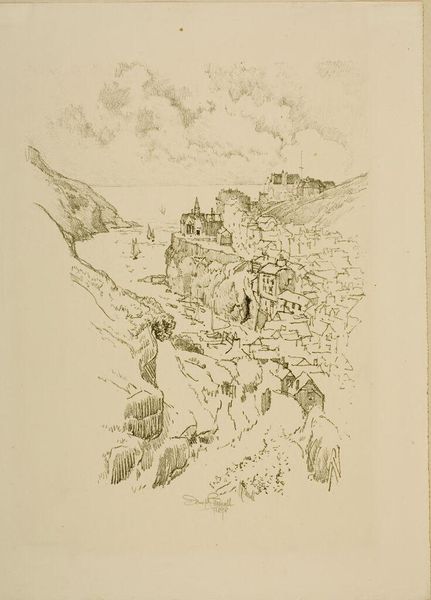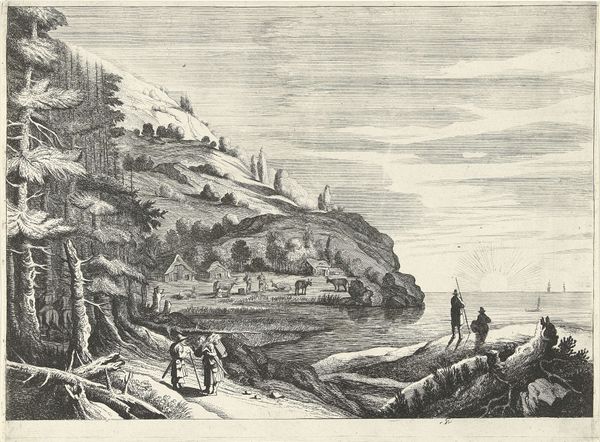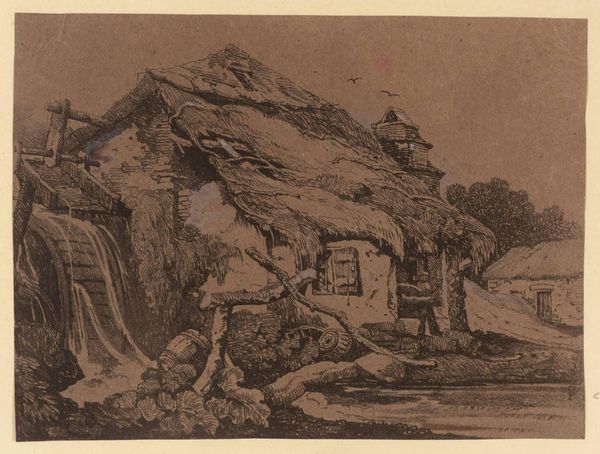
print, engraving, architecture
# print
#
landscape
#
engraving
#
architecture
Copyright: Public domain
Editor: This is Giuseppe Barberis’s “Chiesa Di Santa Croce,” an engraving from 1892. The high contrast and architectural subject matter create a strong, almost monumental, feeling. How do you interpret this work? Curator: Well, immediately I’m drawn to the depiction of power and its connection to the Church, as represented here through this fortress-like building. Notice how the path leads directly up to the entrance, suggesting pilgrimage or perhaps even forced submission. Who controlled access to this path, and therefore, to God, at the time? What did that mean for the local community? Editor: That's a very different perspective from what I was initially thinking. I was focused on the timelessness of the image. Curator: And that's a valid point. However, architecture, especially religious architecture, often embodies both spiritual aspirations and the temporal power structures that commission and control it. How does understanding the role of the Church in the region during the late 19th century influence your perception of the "timelessness" you mentioned? Editor: I guess I hadn't thought about how this serene scene might obscure a more complicated social dynamic at the time. Viewing this image with an understanding of 19th-century social hierarchies, reveals a potential tension I hadn't recognized before. Curator: Precisely! Art doesn't exist in a vacuum. It's always speaking to and from a particular moment in time, often reflecting or subtly challenging dominant ideologies. Editor: I see what you mean. It really opens up a lot of avenues for exploration to consider art within the historical context that shaped its creation. Curator: Absolutely! And I learned from you how compelling the artwork can be simply as an object.
Comments
No comments
Be the first to comment and join the conversation on the ultimate creative platform.


